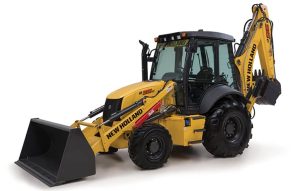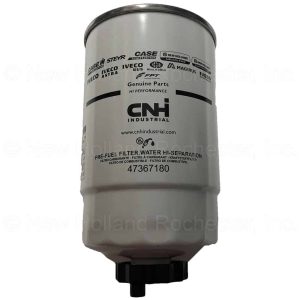New Holland Backhoes: 4 Steps to Keep Yours on the Job
Backhoes are a major investment in the future of your construction business. You know New Holland backhoes are engineered to give you years of service and top performance, but you have to do your part, too. Heavy loads, moving parts and dirt can combine to create costly problems that can be avoided if you care for your equipment properly.
Here’s a four-point plan that will help keep your backhoe on the job and earning money.
1. Start every day with a walk-around.
 Follow New Holland’s recommendations for routine maintenance. You can post an inspection check-list on the driver’s side of the cab, where it’s easy to refer to each day before starting the machine.
Follow New Holland’s recommendations for routine maintenance. You can post an inspection check-list on the driver’s side of the cab, where it’s easy to refer to each day before starting the machine.
Drain any water in the fuel water separator. Visually inspect the structure, pins and hoses of the boom, stick, bucket and swing arm casting area, and look for any missing parts. Check the battery cables, engine belts and electrical wiring, and look on the ground for leaks. You should check the air restriction gauge weekly – don’t remove the air filter unless if you don’t have to.
Scrutinize anything that touches the ground more carefully, looking for:
- Leaks or rubbing points on the boom and stick.
- Wear on the bucket’s cutting edge – replacing it before it starts wearing into the bucket will cost far less.
- Missing bucket teeth or loose retainer pins.
Hoses on New Holland backhoes are tied close to the stick and boom, to help keep them out of harm’s way. But damaged hoses are a common cause of down time, so inspect them carefully.
2. Grease is the word.
Swing systems are often heavily loaded, and front axle and trunnion bearings are under a lot of pressure when working. So keep them greased, along with all the pins and bearings. Give them enough so you actually see it extruding from the area, but don’t over-do it, as it will just attract dirt. Manuals for New Holland backhoes explain which grease to use where, but you also need to consider current weather and operating conditions.
Know where all the grease zerks are located, so you don’t overlook one. Wipe them off before greasing, so you don’t pump grime into the zerk. And keep a few extra zerks with you, so you can quickly swap out any that aren’t taking grease.
3. Clean fluids are the elixir of life.
 Contaminated oil or fuel spell big trouble, whereas clean fluids help your engine and transmission last longer. Sufficient oil ensures tight tolerances in the hydraulic system, keeping impurities out. But the oil has to be perfectly clean, or you’re merely introducing problems. Don’t carry it around in an open container. And wipe around the dip stick before removing and replacing it.
Contaminated oil or fuel spell big trouble, whereas clean fluids help your engine and transmission last longer. Sufficient oil ensures tight tolerances in the hydraulic system, keeping impurities out. But the oil has to be perfectly clean, or you’re merely introducing problems. Don’t carry it around in an open container. And wipe around the dip stick before removing and replacing it.
Top off fluids per New Holland’s specs, and check the windshield cleaner level, too. That may not be a critical wear part, but a filthy windshield can certainly slow down the day’s work. Remember the backhoe has to be level when you check fluids.
4. Rubber is as important as iron.
Tire pressure affects tire wear, traction, pushing power, stability, speed and ride, so make sure it’s correct. Check tires for cuts, too.
Proactive = profitable.
New Holland backhoes are built rugged, but they can’t maintain themselves. Less-than-optimum performance costs money, both in lost productivity and wasted labor, not to mention that operators become fatigued sooner when equipment isn’t working as well as it should. Turning this four-point plan into consistent habits will keep your equipment in top condition, and that means a top-performing bottom line.
